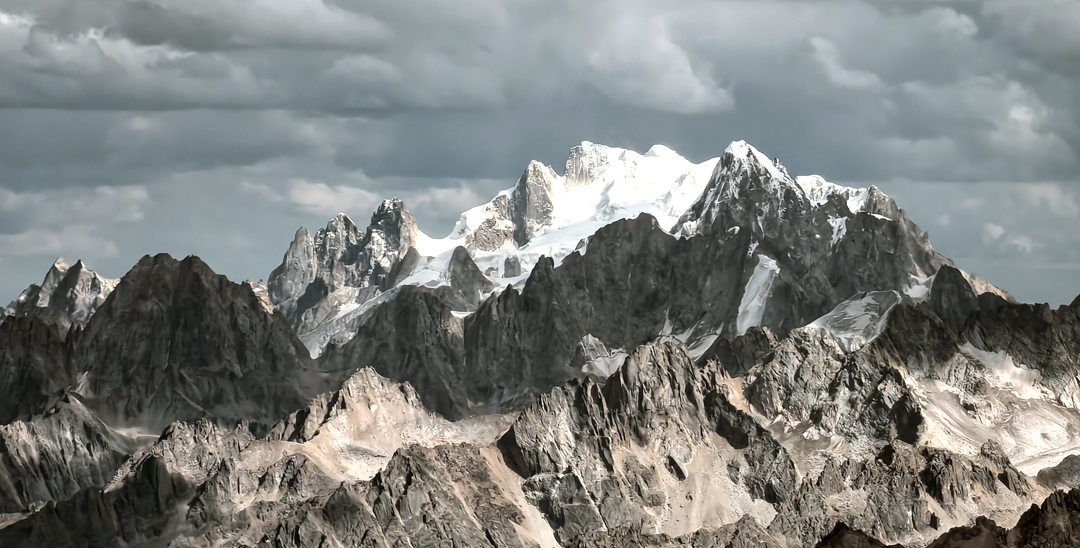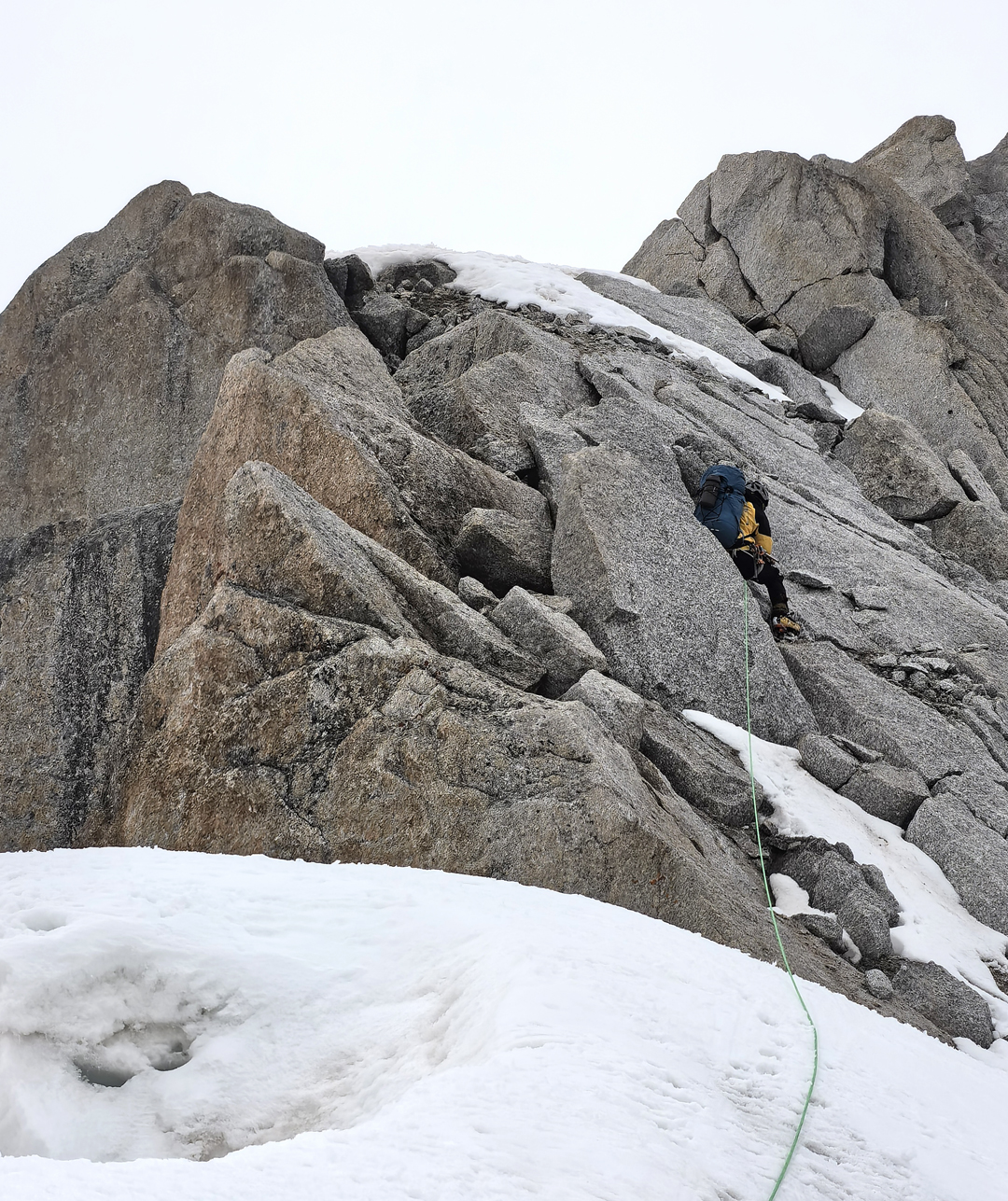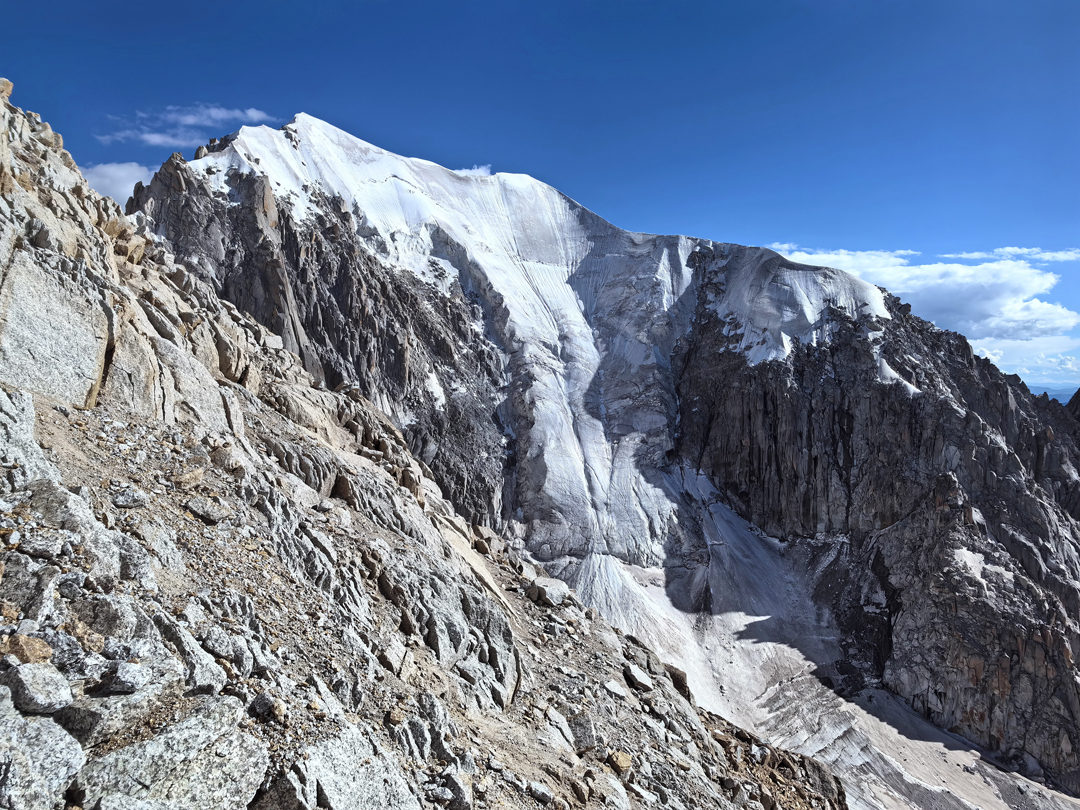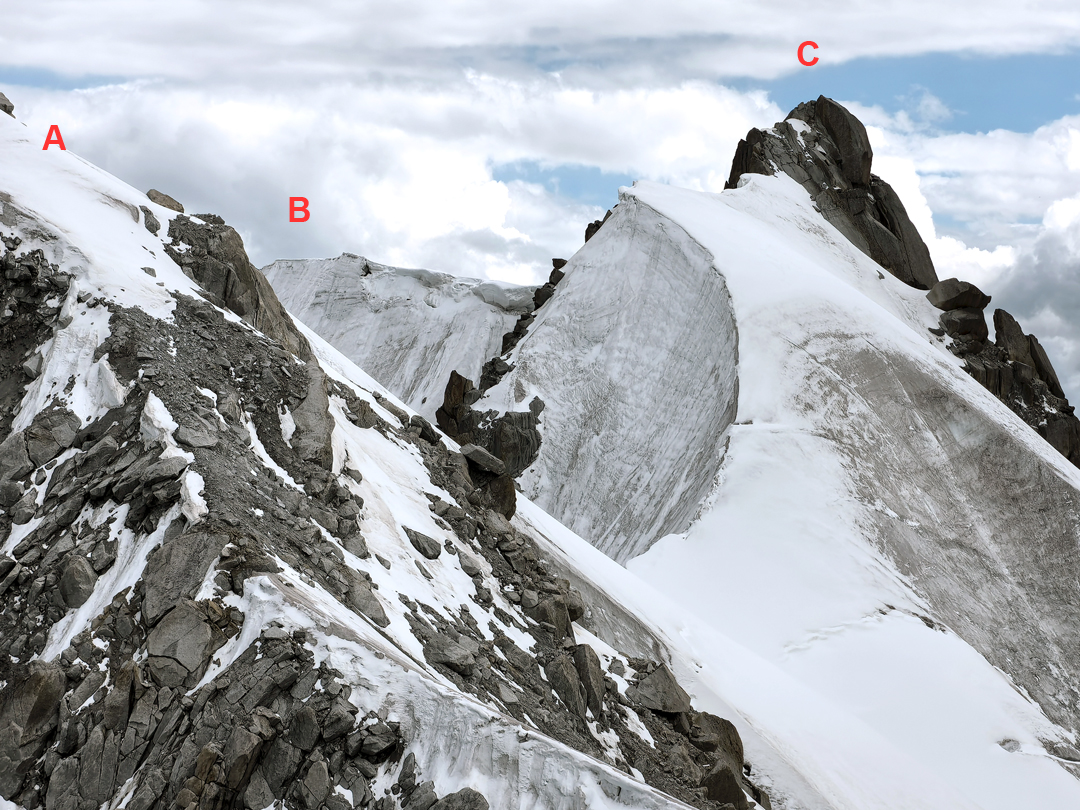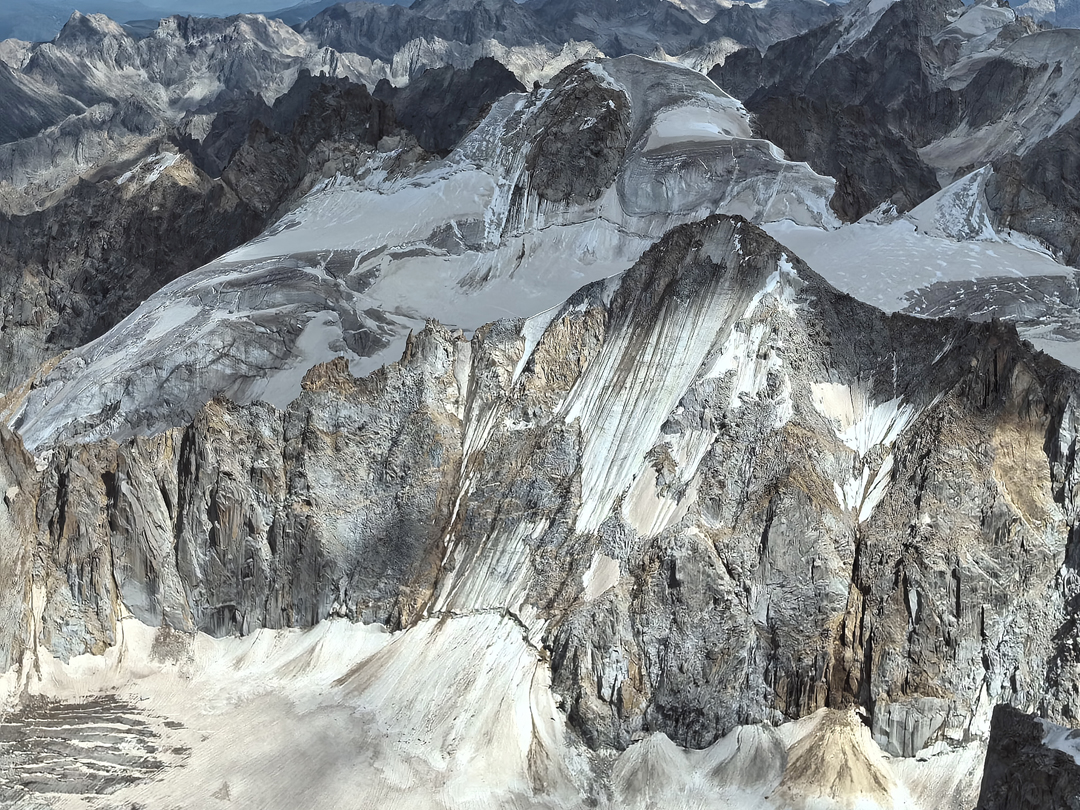Zhuqing, North Ridge via West Face of Nobgyar North
China, Sichuan, Shaluli Shan
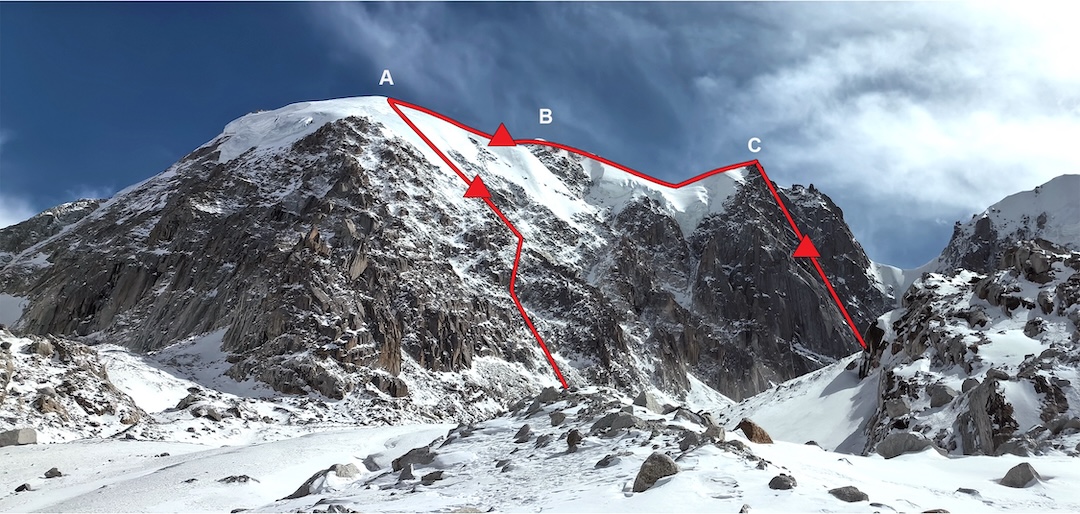
The highest of a cluster of peaks in the northern Shaluli Shan, separated from the well-known Chola Shan by the G317 Highway, is Zhuqing (5,849m on Chinese maps, 32°2’25.95”N, 98°49’1.06”E), named after the town nine kilometers to the north. There was no recorded ascent in this group until August 2023, when Qiyun Fu and I climbed the south face and southeast ridge of Zhuqing East, measuring its altitude at 5,722m (32°2’16.98”N, 98°49’11.6”E). We had hoped to continue to the main summit but ran out of time.
The following month, Yongpeng Fu and Xinyue Cao climbed Sejong (5,816m, a summit southwest of Zhuqing; see AAJ 2024).
I returned in February 2024 to try Zhuqing via an approach from the north, but the weather prevented an attempt. I then asked Wenkai Zhong to try Zhuqing with me in the summer.
Using three porters and three motorbikes, we headed south from Zhuqing town on August 3 to reach our base camp at 5,050m. The next day, we climbed up the rocky west face of Peak 5,737m (Nobgyar North, spelled Nobyugya in AAJ 2024) to a height of around 5,500m, where we bivouacked. In the lower section we didn’t belay, but higher there were two pitches of 5.9.
The following morning, we climbed the upper ice slope (50°), with the second jumaring and carrying most of the load. We reached the summit of Peak 5,737m at 4:20 p.m. and continued along the ridge in the direction of Nobgyar. To the north-northeast, 1,800m below us, we could see the elaborate Dzogchen Monastery, just south of Zhuqing town. We bivouacked on a large, flat boulder on the ridge.
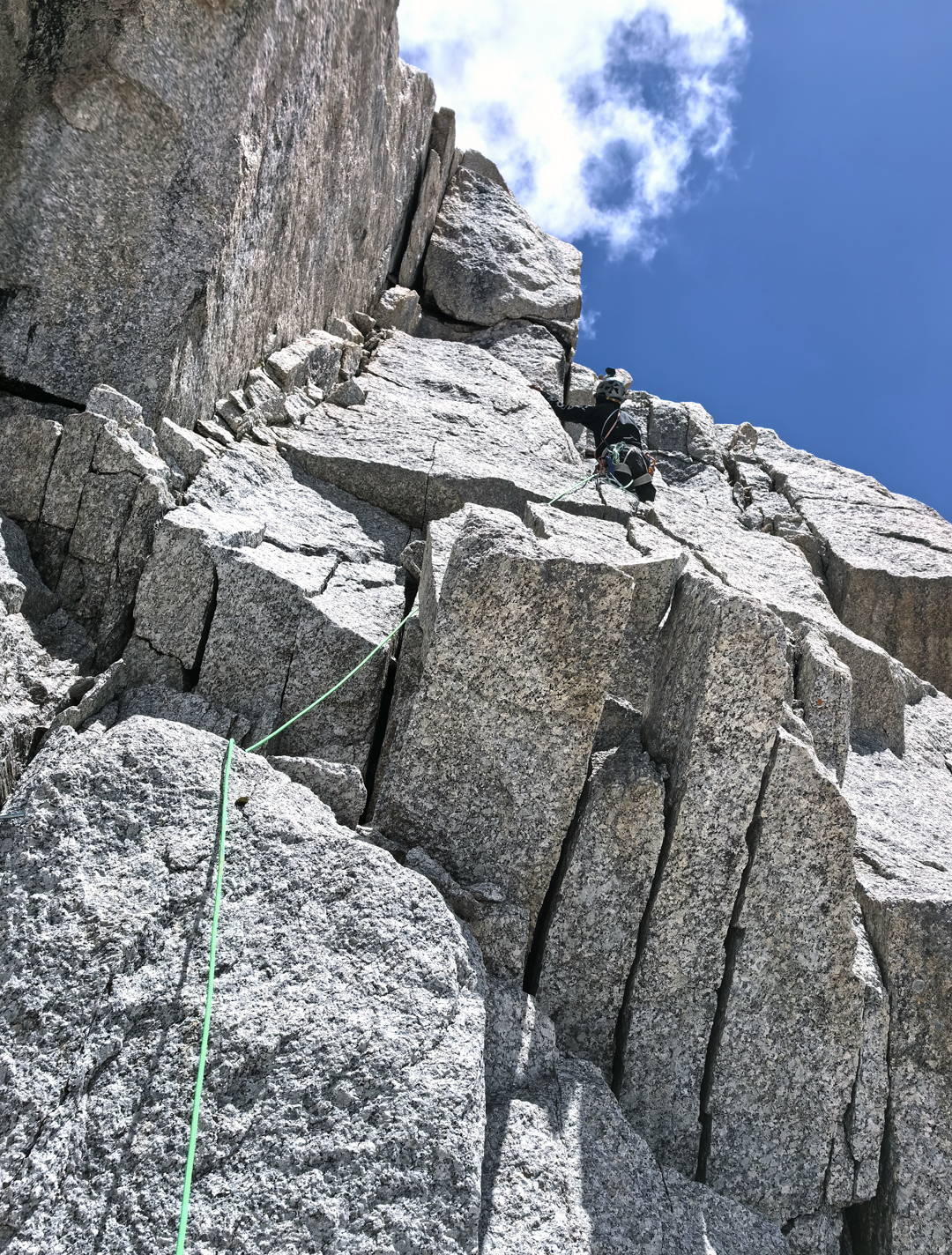
August 6 dawned clear, and in two hours we reached Nobgyar, which we measured at 5,777m. Continuing south, we simul-climbed until the final rocky section of Zhuqing. Here, a section of M3/4 led to the summit, which we measured at 5,804m. In all, the traverse from Nobgyar North covered one kilometer.
Rather than return the way we’d come, we decided to rappel about 500m down the rocky west face, a nearly disastrous decision. A couple of rappels from Abalakov anchors got us to the top of the rock wall, where progress was greatly hindered by several stuck ropes—in one case requiring Wenkai to retrieve the ropes manually and downclimb very difficult rock. Rockfall hit us and damaged the ropes. We made an unplanned bivouac, with little food or fuel, on a narrow platform at around 5,500m.
On the morning of the 7th, we experienced more stuck ropes, loose rock, and poor anchors, and had to descend on partially cut ropes until our 12th rappel from the summit dropped us into the bergschrund, from which we descended to a final bivouac site in a snow scoop.
The weather was still sunny on August 8, and we traversed a two-kilometer crevasse maze to base camp and then returned to Zhuqing town at 4 p.m. It rained cats and dogs the day after we left the valley, as if to demonstrate how close we were to a situation that would have given us no way back.
We named our ascent Remembering Yueshuai (700m, D- 5.9 AI2 M4). Yueshuai Song had been my climbing partner since I started alpinism in 2022, but he was tragically killed in a rappel accident on Xuebaoding in May 2024. The late Dongdong Yan, one of the most renowned Chinese alpinists of his time, once remarked that the best way to honor someone is to remember them, so they are never too far away.
—Zhan Fang, China
Editor's Note: Zhuqing has become the accepted spelling in publications written in English. However, a phonetic interpretation of the Tibetan name would be Zhiltroen.


